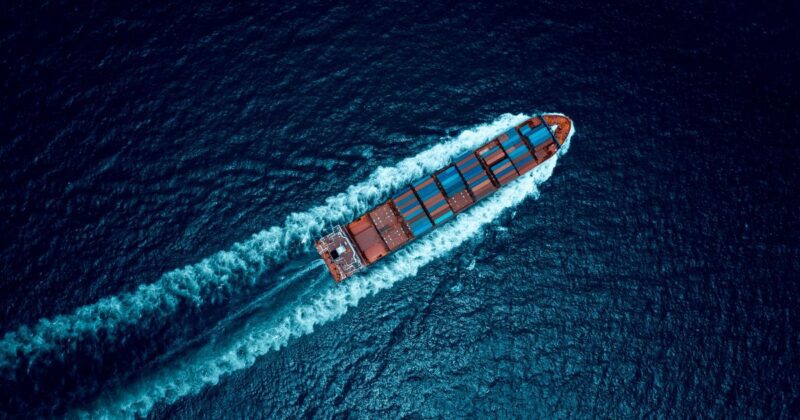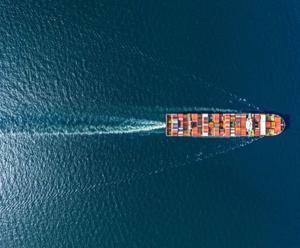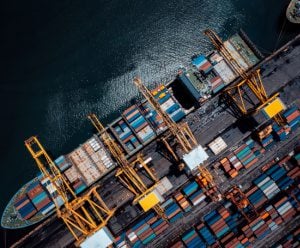
Early peak season driven by tariff and capacity fluidity

Container shipping lines and their customers are once again in the eye of a geopolitical and operational storm as a 90-day pause in U.S.-China tariffs unleashes a torrent of demand, surging rates, and mounting congestion across the world’s busiest trade lanes.
The temporary 90-day reprieve, announced mid-May, has set off an early trans-Pacific peak season, with shippers racing to replenish inventories before the tariff window slams shut. A surge in bookings trying to move cargo before the tariff window closes is ongoing. As a result, port congestions and vessel delays, as well as much higher prices for those exposed to spot markets, are the key concerns of businesses.
The rush to import cargo is occurring against the backdrop of the latest U.S.-China trade negotiations in London, and court battles in the U.S. over whether President Donald Trump’s tariffs are legal.
“The market reaction has been intense, although not unexpected,” said Niki Frank, CEO, DHL Global Forwarding Asia Pacific. “It will be challenging, but we have taken precautions to manage this crisis, leveraging on our wide network of carriers to provide customers with a myriad of options.”
All eyes on the state of rates
The surge in spot rates in the past month bears some resemblance to the pandemic container shipping market. The recent Drewry’s World Container Index on 5 June saw a 41 percent increase, as President Donald Trump’s “pause” on import tariffs led to a resumption of U.S.-bound traffic after the initial collapse of transpacific volumes.
As reported in The Freight Buyers’ Club, freight rates from Shanghai to Los Angeles jumped 57 percent in the first week of June, and experienced a month-on-month increase of 117 percent since 8 May. Spot rates to New York rose 39 percent in the first week of June and were up 96 percent over the previous four weeks.
“While the tariff war is driving much of the Pacific volatility, strong demand and capacity shifts are also pushing up prices on other major lanes,” noted Frank. Rates from Asia to the east and west coast of South America had also seen high increases, rising 100 percent in a single week, while Asia-Europe rates were climbing 40 percent in the latter weeks of May and into June.
Carriers have responded by reinstating blanked sailings and adding extra loaders. Sea Intelligence reported in the first week of June that on Asia-North America West Coast (NAWC) services, it had recorded capacity growth in excess of 30 percent year-on-year in five of the next 11 weeks. Across June/July for Asia-NAWC, then in June, the lines are increasing capacity 12.8 percent compared to before the tariff pause. In July, the capacity injection is increasing to 16.5 percent compared to the pre-pause situation.
Port congestions making an expected return
The surge in demand and capacity is colliding with persistent congestion at key ports. As DHL's June Ocean Freight Market Update reports, North America’s largest gateways are once again under strain, with multiple vessels waiting to load or discharge cargo at Los Angeles/Long Beach, Qingdao, Shanghai and Ningbo. It added that the situation at European ports, including Antwerp, Hamburg, and Bremerhaven, had improved, but delays were ongoing.
The volume of vessels sailing out of China has increased in a matter of weeks, leading to increased congestion at the U.S. ports. “Cargo that was held due to the uncertainty of the tariffs are now being rushed out to the U.S. before the window closes,” said Praveen Gregory, Senior Vice President, Ocean Freight, DHL Global Forwarding Asia Pacific. “Across the board, we have been redeploying resources and advising customers on how to manage this spike for the first two weeks of June and the immediate future.”
Demand spike met with sufficient capacity
The rapid ramp-up, and blank sailings in April and early May limiting the repositioning of empty containers back to China, raised some concerns over the risk of equipment shortages. But according to Linerlytica, new container inventories in China reached 1.55M TEU by the end of May, with over 2.3M TEU delivered to date. “There is enough equipment in China to overcome potential shortages, although there will be some tightness across some ports in the months to come,” noted Gregory.
Fleet growth is another wild card. Diversions around the Cape of Good Hope have helped absorb some of the new tonnage entering the market, but analysts warn this is a temporary reprieve. As more new vessels are delivered and disruptions eventually ease, the risk of overcapacity and further rate volatility will rise.
Certainty in volatility
The demand outlook remains highly fluid. While global container trade saw double-digit growth in early 2025, forecasters now expect a contraction of around 1 percent for the year, citing persistent trade friction and weakening business sentiment. The S&P PMI signals rising manufacturing costs and a growing risk of recession in the U.S., while consumer demand is softening under the weight of higher tariffs and inflation.
If the operational challenges were not enough, the legal and policy environment remains highly unstable. The U.S. Court of International Trade invalidated the IEEPA tariffs on 28 May, only for the government to secure a stay within hours, pending further appeals. Ahead of the 9 July deadline for the earlier reciprocal tariffs to kick in, talks of extending the deadline is adding more fluidity to the situation.
With so many moving parts—tariff uncertainty, capacity surges, equipment shortages, and port congestion—the outlook for the summer peak season is anything but clear. “The market is caught between surging costs, shifting regulations, and operational bottlenecks,” said Frank. “Shippers need to stay agile and closely monitor developments as the summer unfolds. The only certainty is continued volatility.”
ALSO WORTH READING













 English
English